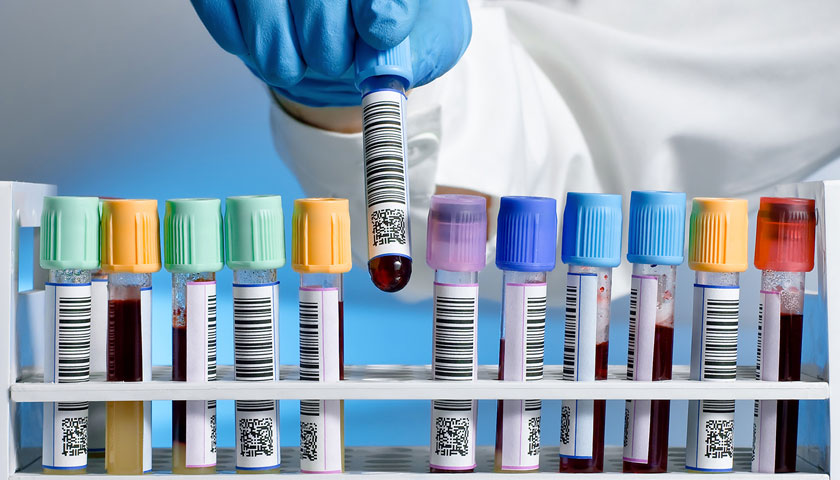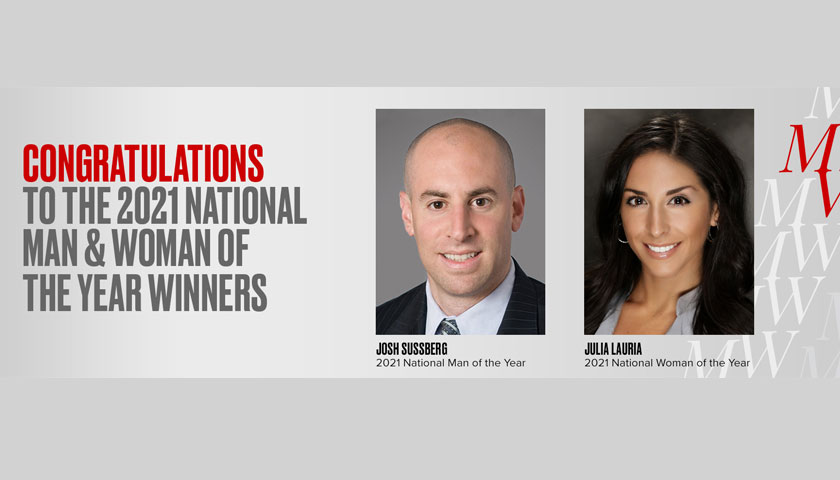Driving the dizzying pace of breakthroughs in blood cancer treatments, The Leukemia & Lymphoma Society (LLS) announced today $42 million for 80 blood cancer research teams around the world.
This latest infusion of funding by LLS, the world’s largest nonprofit devoted to curing blood cancers, brings the organization’s current commitment to more than $188 million in multi-year grants, supporting more than 240 top scientific investigators at the world’s most prestigious cancer institutions, including Memorial Sloan Kettering Cancer Center, MD Anderson Cancer Center, Dana-Farber Cancer Institute, City of Hope and Stanford University, as well as institutions in Australia, Europe and Canada.
LLS-supported researchers are advancing new approaches to blood cancers, including immunotherapy, genomics and precision medicine. Importantly, these innovations are now being applied to research and treatments for patients with other cancers and chronic diseases.
“Advances in technology have helped bring a deeper understanding of the drivers of cancer, and we are seeing remarkable progress in our quest for cures,” said Louis J. DeGennaro, Ph.D., LLS’s president and CEO. “Our longtime vision and investment in innovative research is having an impact on patients today. Remarkably, from the start of 2017 through today, the U.S. Food and Drug Administration (FDA) has approved 32 blood cancer treatments and LLS helped advance 26 of these at some point in their development journey.”
Since its start almost 70 years ago, LLS has invested more than $1.2 billion in cancer research, resulting in game-changing advances; among the latest LLS-supported research projects are efforts to produce the next wave of immunotherapy treatments, new strategies to address the unmet needs of children with acute leukemia, and cures for lethal diseases such as acute myeloid leukemia (AML), myeloma and lymphoma. With 45 new grants supporting early career investigators, we continue to foster the next generation of scientists.
Here’s how the research grant investment breaks down:
Specialized Center of Research
The most ambitious of LLS’s research grants, Specialized Center of Research (SCOR) grants convene multidisciplinary teams of researchers to solve the most difficult challenges in blood cancer. Each program is supported by a $5 million grant over a five-year period. Currently, 11 SCOR grants are running simultaneously, including two special SCOR grants focused on mantle cell lymphoma thanks to a generous gift from The Sarah Cannon Fund at The HCA Foundation. This year, LLS awarded SCOR grants to three new teams:
- John Cleveland, Ph.D., Moffitt Cancer Center, leads a team including scientists at Memorial Sloan Kettering Cancer Center to understand how chronic inflammation of bone marrow in patients with myelodysplastic syndromes (MDS) impairs their immune system from fighting cancer cells. The team is working on different therapies to cure MDS or prevent it from progressing to the more deadly acute myeloid leukemia. The program is highly relevant since the prevalence of MDS is estimated to exceed 100,000 patients in the US, is expected to continue to grow with an aging population, and few therapies are available for these patients.
- Helen Heslop, M.D., leads a team at Baylor College of Medicine developing cellular therapies – infusing patients with living cells that are specially programmed to target diseases such as leukemia, lymphoma and myeloma. On the frontlines of the immunotherapy revolution, Heslop is working on the next generation of immune-based therapies, including maximizing newly-approved chimeric antigen receptor (CAR) T-cell therapy, which engineers T cells to kill cancer cells. Her team is also developing so-called “off-the-shelf” CAR-Ts using donor rather than patients’ cells. Another project involves developing an oral vaccine to boost the cancer fighting T cells of myeloma patients, and a third is developing a CAR-T for patients diagnosed with AML.
- Craig Jordan, Ph.D., University of Colorado, and his colleagues are taking a multi-pronged approach to eradicate cancer stem cells in AML patients. Treating the cancer without ridding the body of the stem cells is like mowing the lawn but leaving the roots, Jordan says. While one team is developing a process to kill the stem cells by blocking their ability to produce energy, others are utilizing combination therapies to attack the cancer on multiple fronts, using each patient’s unique stem cells to personalize therapy. Most notably, his team was pivotal in demonstrating that a combination of azacitidine plus a targeted therapy called venetoclax can produce long-term disease control in patients with AML, and appears to be a game-changer for the future therapy of the disease. The work is supported by a matching fund from the University of Colorado Medical Center.
New Ways to Treat Children with Cancer
LLS has a long history of helping children with cancer. In fact, it is redoubling efforts to find new treatments for children and adolescents who don’t respond to standard care. To this end, LLS is leading a collaboration of pediatric physicians and scientists to develop the framework for a multi-arm clinical trial testing targeted therapies in pediatric acute leukemia. Further, LLS is committed to investing more than $20 million in childhood cancer research over the next five years. Here are some of the new projects that have just started:
- Todd Druley, M.D., Ph.D., Washington University in St. Louis, has received a Career Development Program (CDP) Scholar grant to study AML in children. Druley attributes poor outcomes in children with AML to residual cancer cells that remain after treatment. His lab is developing a strategy to sharpen molecular detection of AML and identify the precision medicine agents that best target individual patients.
- Mignon Loh, M.D., University of California San Francisco, received a Translational Research Program (TRP) grant, a program that helps researchers take their discoveries from lab to clinic. Loh and her team are developing a strategy for treating an aggressive pediatric cancer called juvenile myelomonocytic leukemia (JMML). The team is studying why JMML resists treatment in some patients, and is testing an approach combining targeted therapy with an epigenetic modifier, a therapy that alters gene behavior in a way that may enhance the destruction of cancer cells.
- Carolyn Felix, M.D., Children’s Hospital of Philadelphia, received a TRP focused on a high-risk subset of pediatric AML patients with a mutation called “mixed lineage leukemia-rearranged” (MLL-AML), which has a very poor survival prognosis. The team is developing a therapy that combines an old class of chemotherapy called TOP2 poisons with a molecularly targeted therapy that blocks an enzyme called DOT1L associated with MLL AML.
- Tomasz Cierpicki, M.D., University of Michigan, is using his new TRP to study a subtype of pediatric AML caused by a genetic mutation called Nup98-NSD1. He is investigating treating the cancer with a targeted therapy that inhibits the NSD1 enzyme.
- Soheil Meshinchi, M.D., Ph.D., Fred Hutchinson Cancer Research Center, is studying an antibody drug conjugate — a therapy that links an antibody with a cancer-killing chemical — to target a protein called mesothelin that is highly expressed in children with AML. The work is supported by a matching gift from Bayer pharmaceuticals.
Releasing the Brakes on the Immune System
Harnessing the body’s immune system to fight cancer is becoming a mainstay of cancer treatment. In addition to CAR-T, another transformational approach is checkpoint inhibitor therapy. This approach suppresses the proteins that allow cancer cells to hide from the immune system. Knocking out these “checkpoint” proteins frees T cells to find and attack cancer cells. LLS is supporting many researchers pursuing this field of study:
- Phillipe Armand, M.D., Dana-Farber Cancer Institute, is testing various combinations of immunotherapy to target multiple checkpoint proteins simultaneously in follicular lymphoma.
- Lakshmi Nayak, M.D., of Dana-Farber Cancer Institute, is testing the treatment in patients with primary central nervous system lymphoma (PCNSL), alone and in combination with ibrutinib, a therapy that inhibits the BTK protein prevalent in several types of cancers. Previously published work by Nayak in a limited number of PCNSL patients already shows great promise in controlling the disease.
- Amer Zeidan, M.D., Yale of New Haven Health, is testing a combined targeted therapy with immune checkpoint inhibitors to treat patients with myelodysplastic syndromes and chronic myeloid leukemia.
- Christiane Querfeld, M.D., of City of Hope is testing immune checkpoint inhibitors in cutaneous T-cell lymphoma.
Next Generation CAR-T
This revolutionary approach is already approved in acute lymphoblastic leukemia for children, teenagers, young adults up to age 25, and in certain large B-cell lymphomas, and LLS researchers are pursuing its utility in other blood cancers. Ravindra Majeti, M.D., Ph.D., Stanford University, is developing a CAR-T for acute myeloid leukemia. One of the risks of the aforementioned experimental “off-the-shelf” CAR T-cell therapy is that the patient’s body might reject the donor cells. Maksim Mamonkin, Ph.D., Baylor College of Medicine, is developing an “off-the-shelf” CAR-T that would resist this response.
Continuing the Offensive Against AML
Two years after launching our Beat AML Master Clinical Trial, LLS has enrolled more than 400 patients at 13 cancer centers around the country, with seven pharmaceutical companies testing their therapies in 11 different study arms. LLS will present its first sets of data at the 60th American Society of Hematology Meeting in San Diego in December. Many of these patients have gone on to receive one of the experimental therapies in the trial.
In addition to the Master Clinical Trial, LLS’s work to conquer AML proceeds on multiple fronts. G. Greg Wang, Ph.D., University of North Carolina Chapel Hill, is using a cutting-edge gene-editing tool called CRISPR, combined with genetic profiling to understand the mechanisms and pathways by which a particular mutation called DNMT3A leads to the development of AML. Several researchers, including Jason Butler, Ph.D., Hackensack University Medical Center, are investigating the relationship between aging and the development of AML cells. Maria Figueroa, M.D., University of Miami, is working to understand why epigenetics, small chemical changes that regulate the ability of genes to ultimately control cellular function, go awry with age and lead to cancers like AML. Deeper understanding of these aberrations could lead the way to early intervention strategies. Tomasz Skorski, M.D., Ph.D., Temple University, is using genetic profiling technology to find leukemic stem cells in AML so they can be targeted and eradicated.
The March to Myeloma Cures
Myeloma remains incurable, despite a multitude of new therapies that have extended life for thousands of patients over the past decade. LLS supports the work of researchers deploying the latest technologies and emerging therapies to improve outcomes for these patients. Jianhua Yu, Ph.D., City of Hope, is combining CAR-T and bispecific antibodies to treat patients with myeloma, while Mala Shanmugam, Ph.D., Winship Cancer Institute Emory University, is testing whether myeloma patients will respond to venetoclax, which is FDA-approved for chronic lymphocytic leukemia and close to an FDA decision for AML.
Toward Prevention of Blood Cancer
While the causative basis for blood cancer remains largely elusive, LLS has partnered with the Rising Tide Foundation for Clinical Cancer Research (RTFCCR) to explore ways to either detect mutations in otherwise normal healthy individuals or develop ultrasensitive methods to detect cancer cells that remain after therapy. Ola Landgren, M.D., Memorial Sloan Kettering Cancer Center, is using immuno-positron emission tomography to detect and localize small numbers of remaining multiple myeloma cells after therapy or detect them in patients with pre-myeloma conditions. George Vassilou, Ph.D., The Wellcome Trust Sanger Institute, Cambridge, UK, is exploring how the aging process leads to genetic changes that causes healthy individuals to progress to a range of leukemias. A third grant with world-wide collaborators, studying a similar phenomenon as Vassilou, will be announced shortly.
LLS’s Venture Philanthropy Focus
In addition to its investment through grants, and to help get new therapies to patients faster, LLS continues to invest approximately $6 million a year in its Therapy Acceleration Program (TAP), a venture philanthropy model through which it partners directly with biotech and academic institutions to advance promising novel therapies in the development pipeline. In addition to its significant investment in academic research, LLS supports currently 19 TAP projects, including some recent additions: Sutro Biopharma, Verastem Oncology and miRagen Therapeutics.
“Curing cancer will require exceptional scientific minds, bold ideas, forward-looking investors and compassionate philanthropists,” DeGennaro said. “As a patients-first organization, LLS has the ability to bring all of these forces together. Working together I believe we can cure cancer. Like we say at LLS, ‘Beating cancer is in our blood.’”
Learn more about LLS’s research investment here



